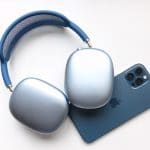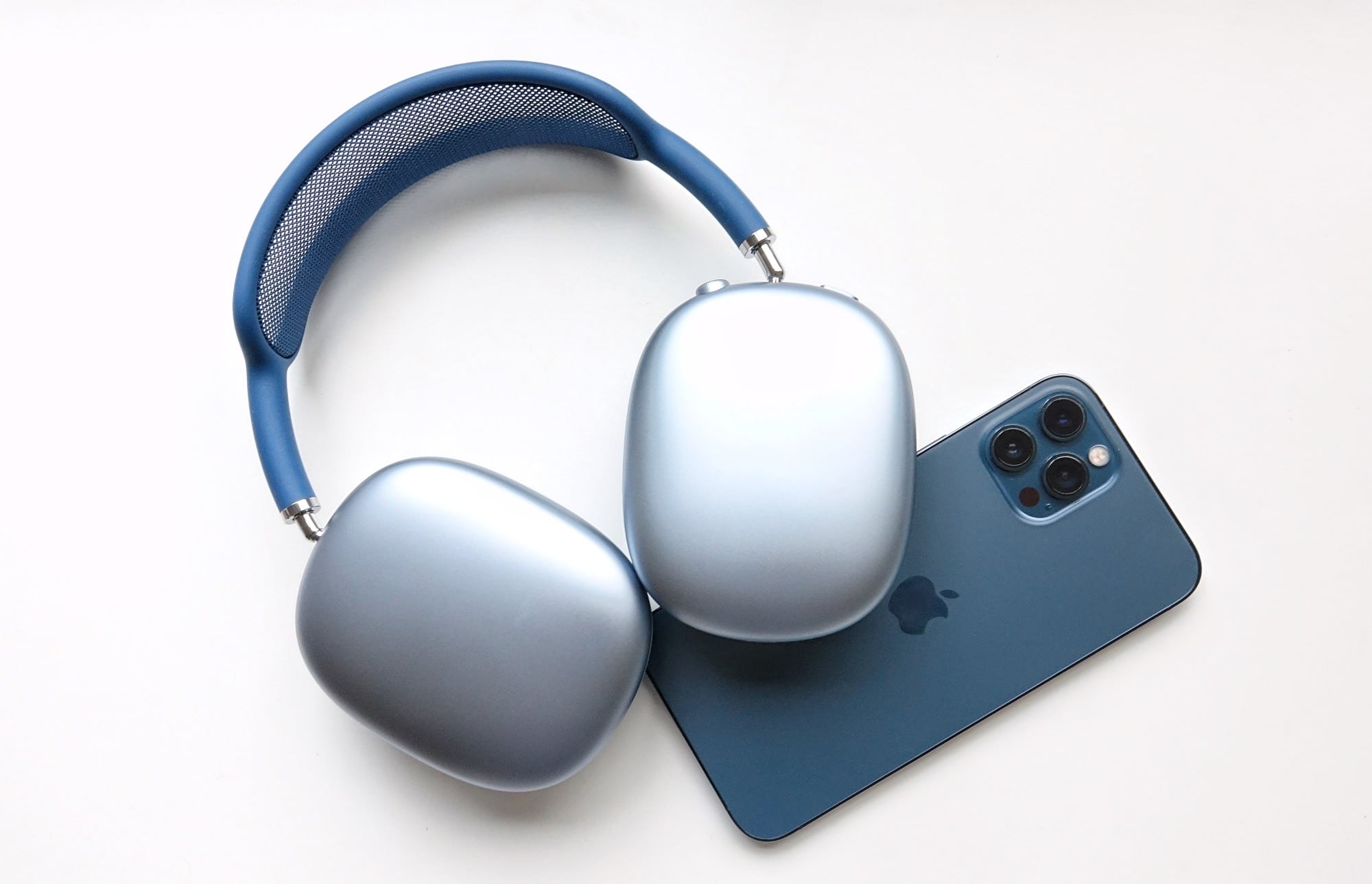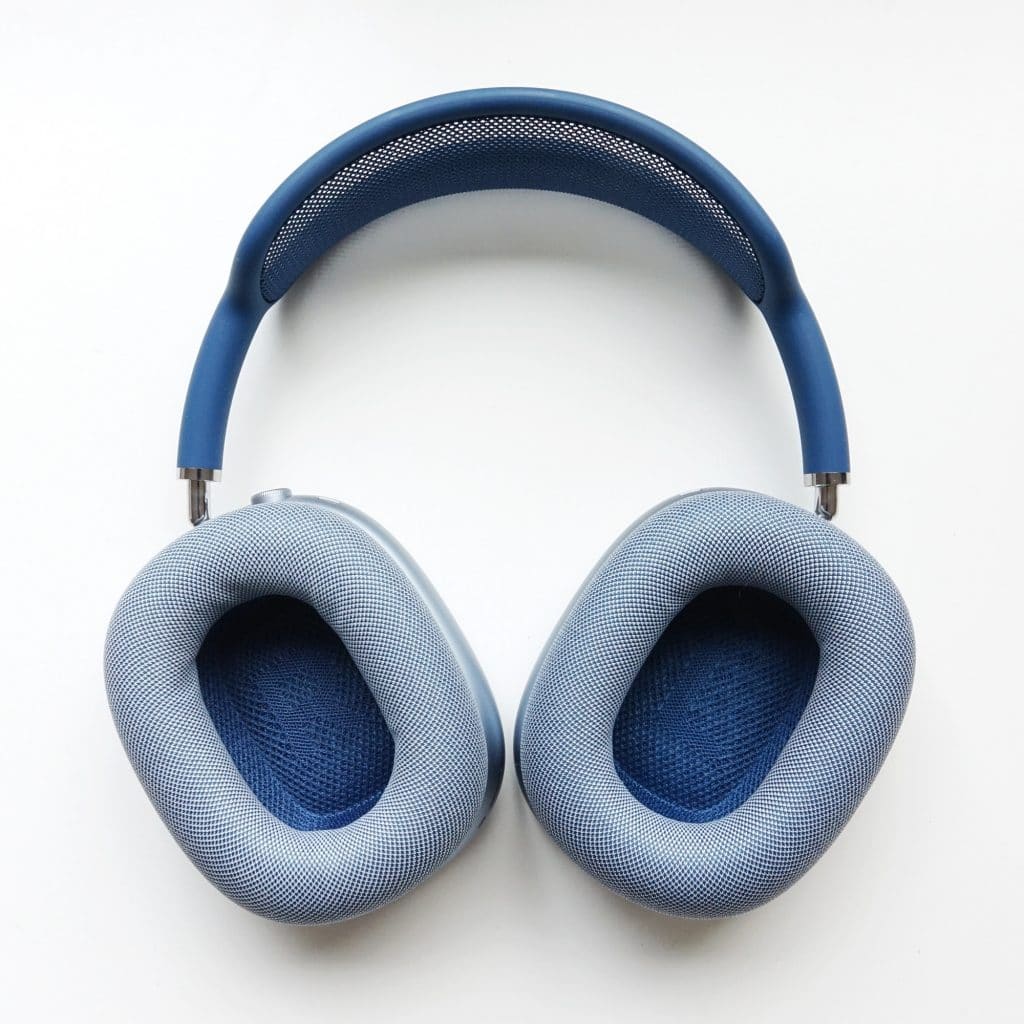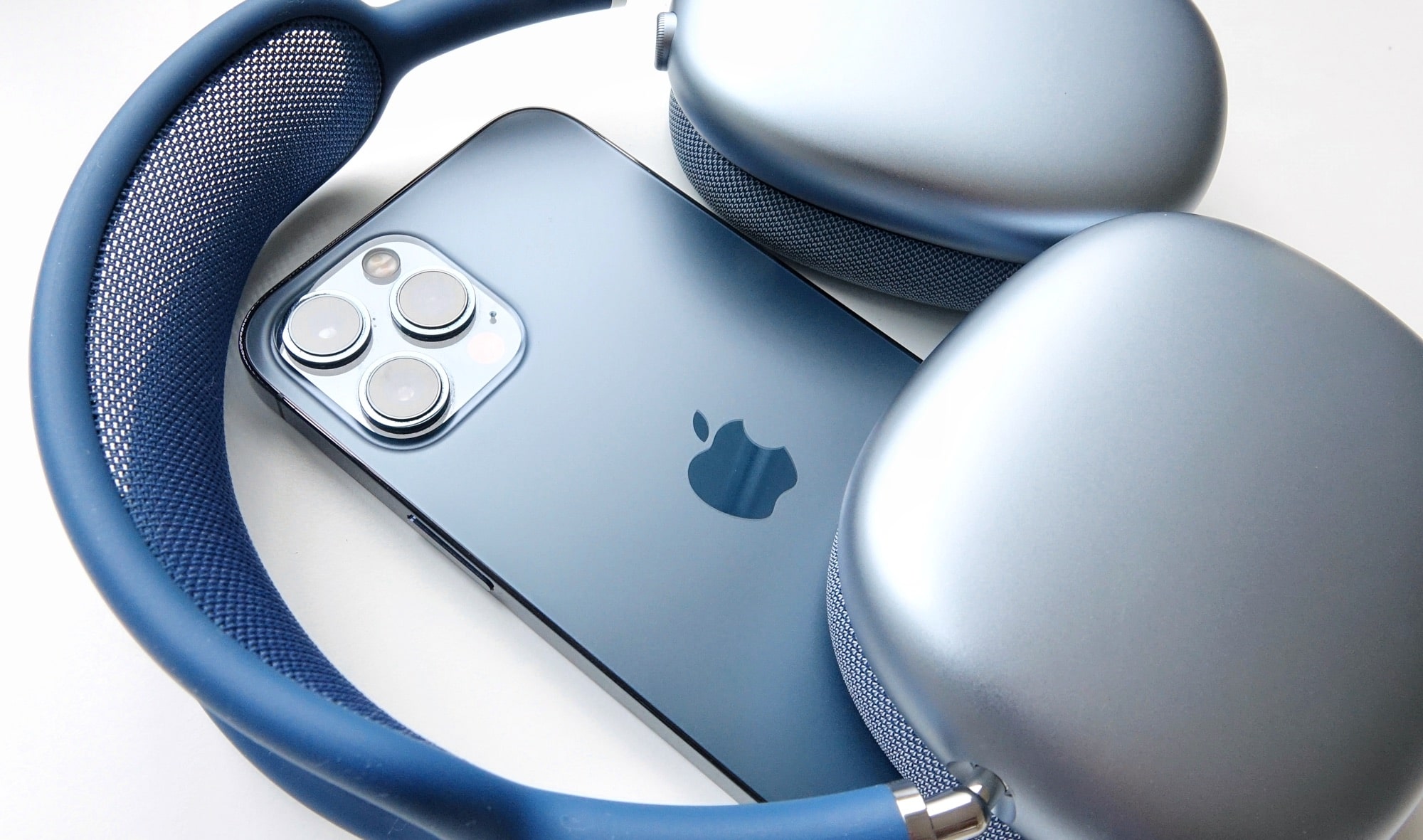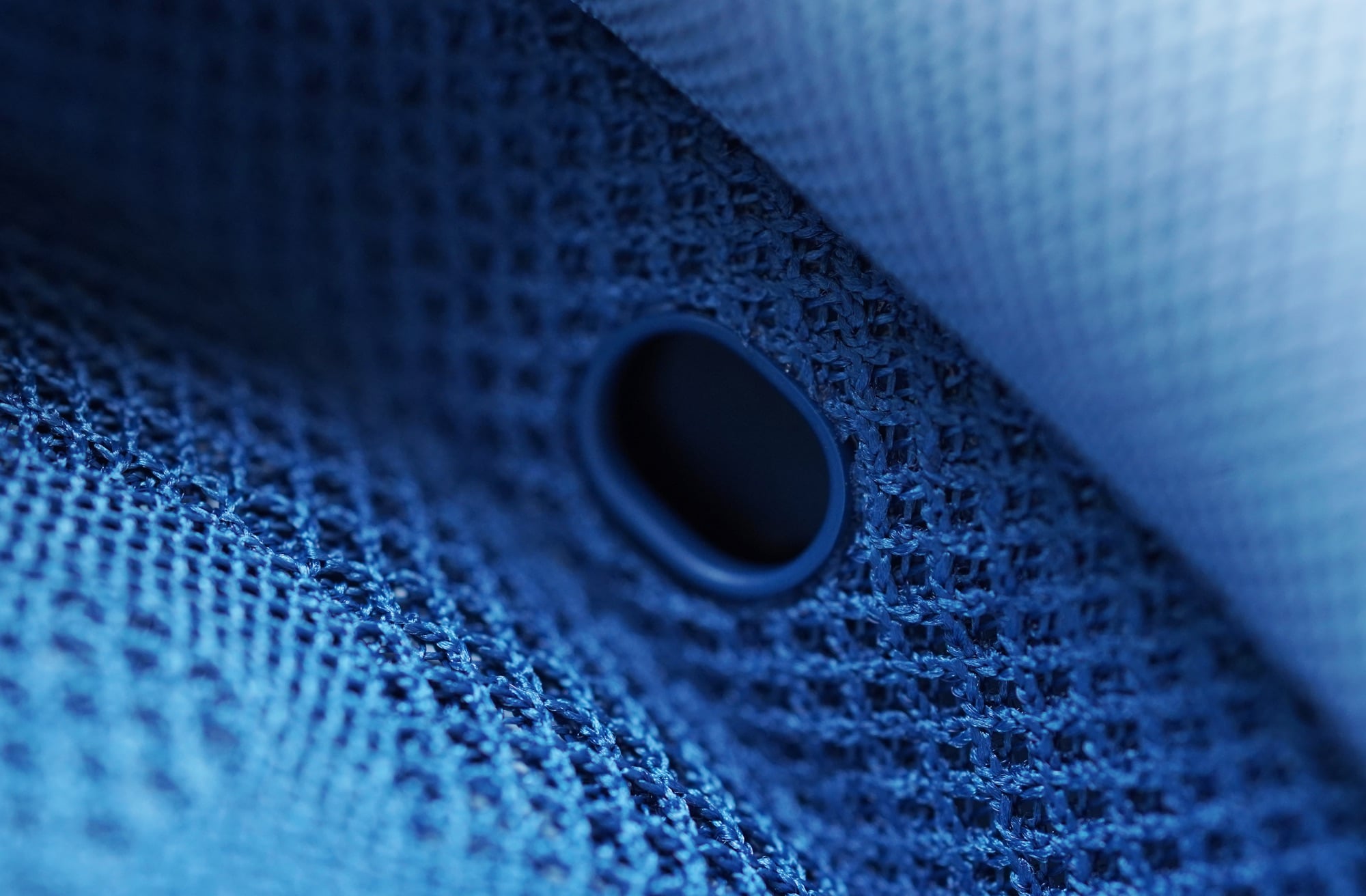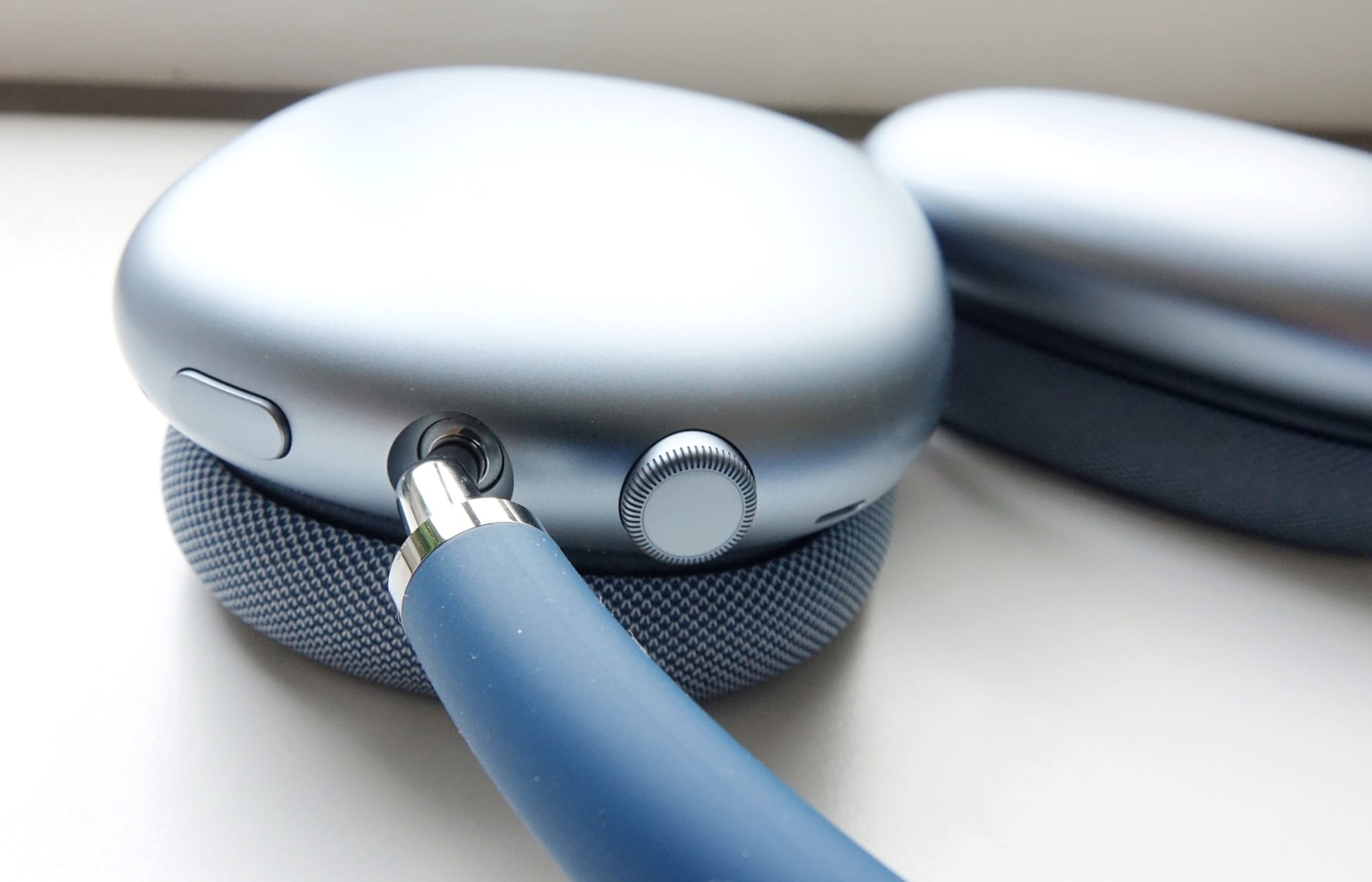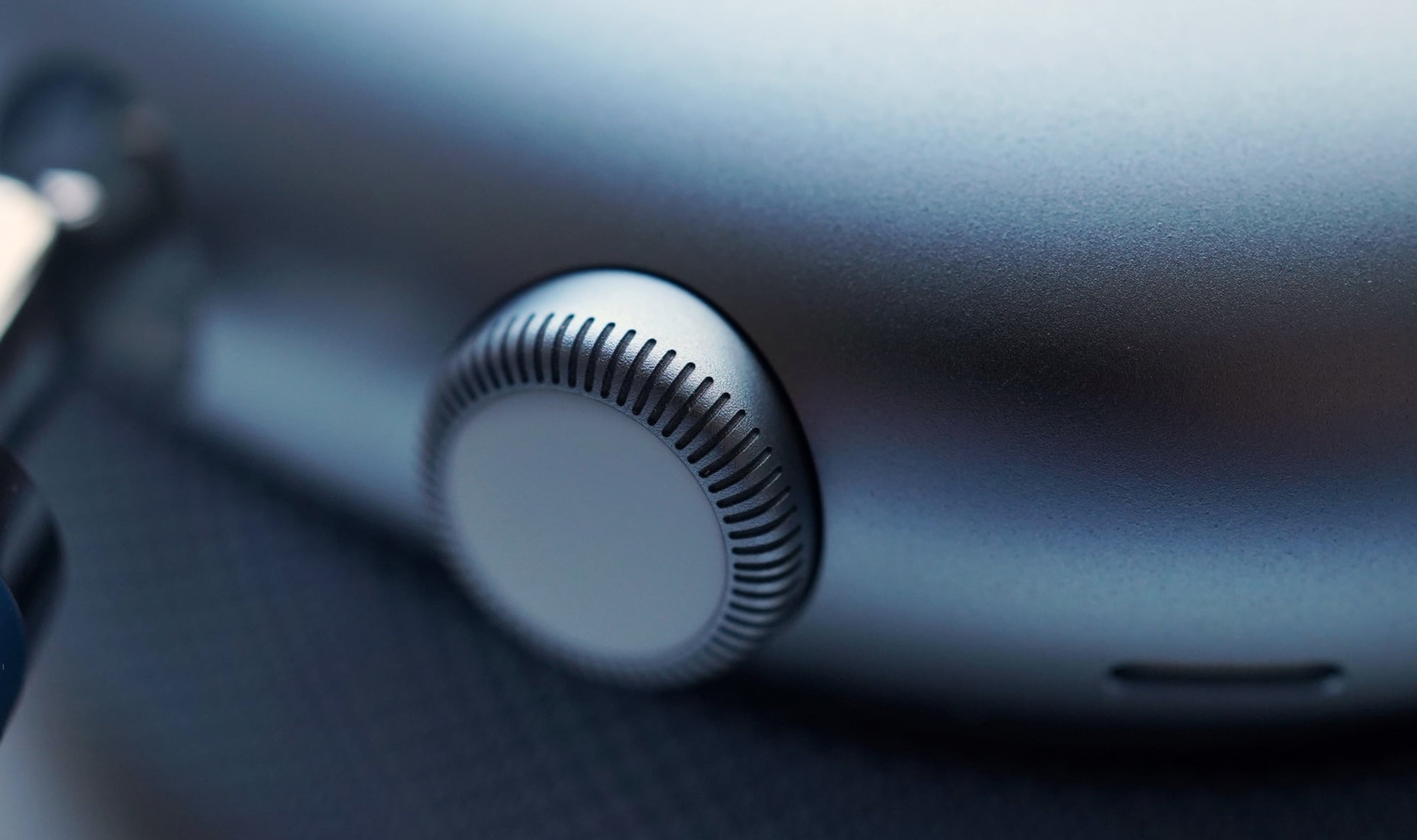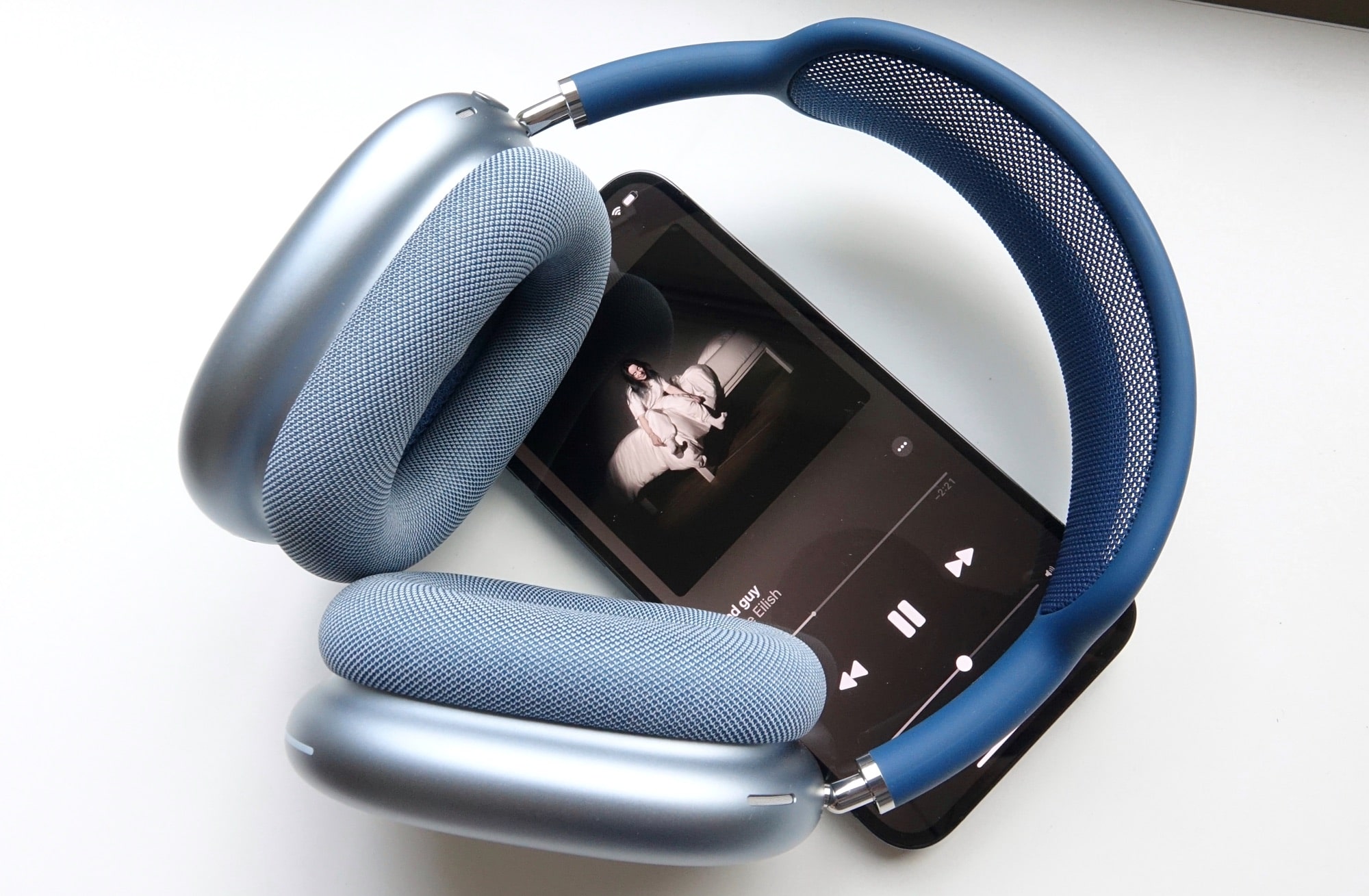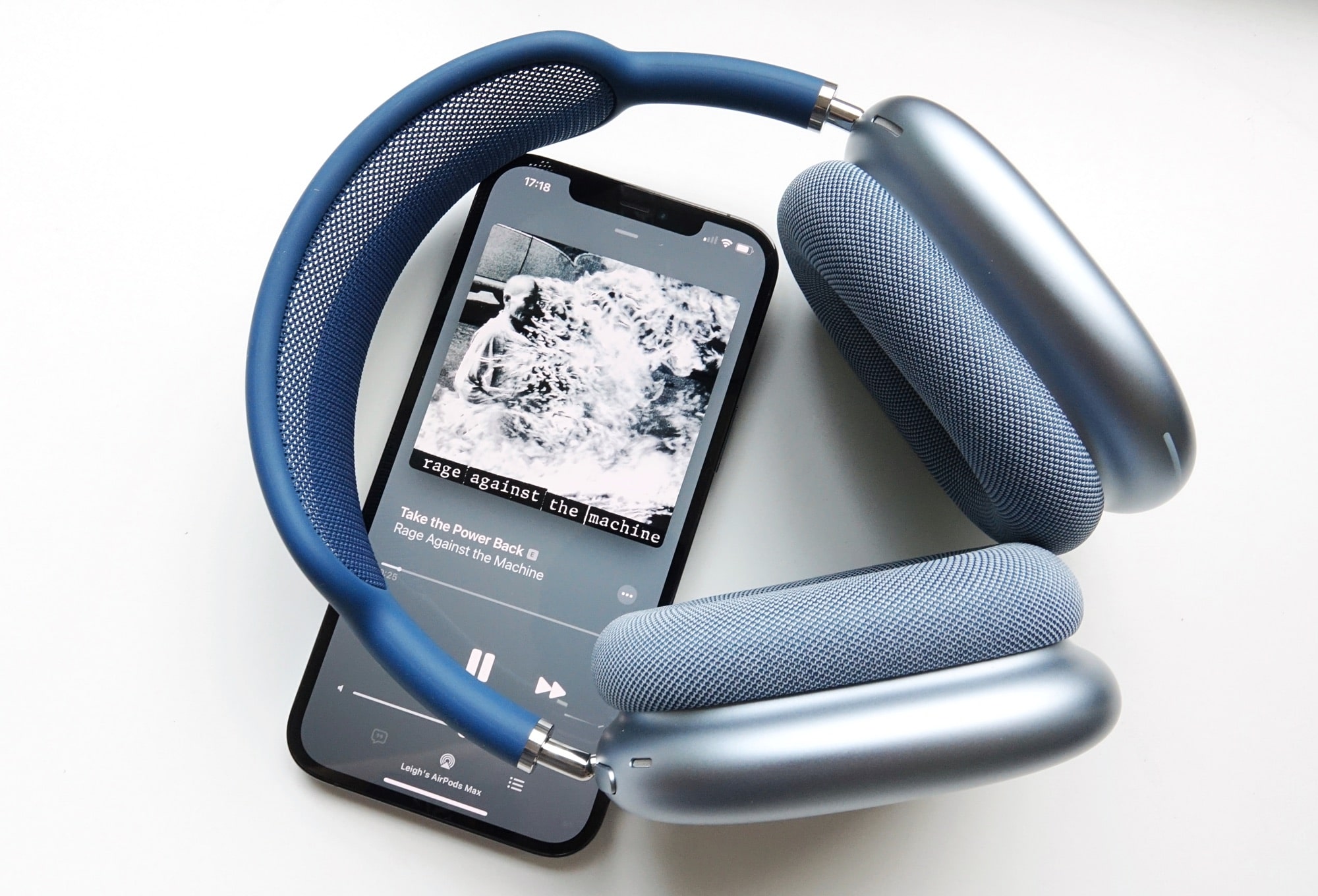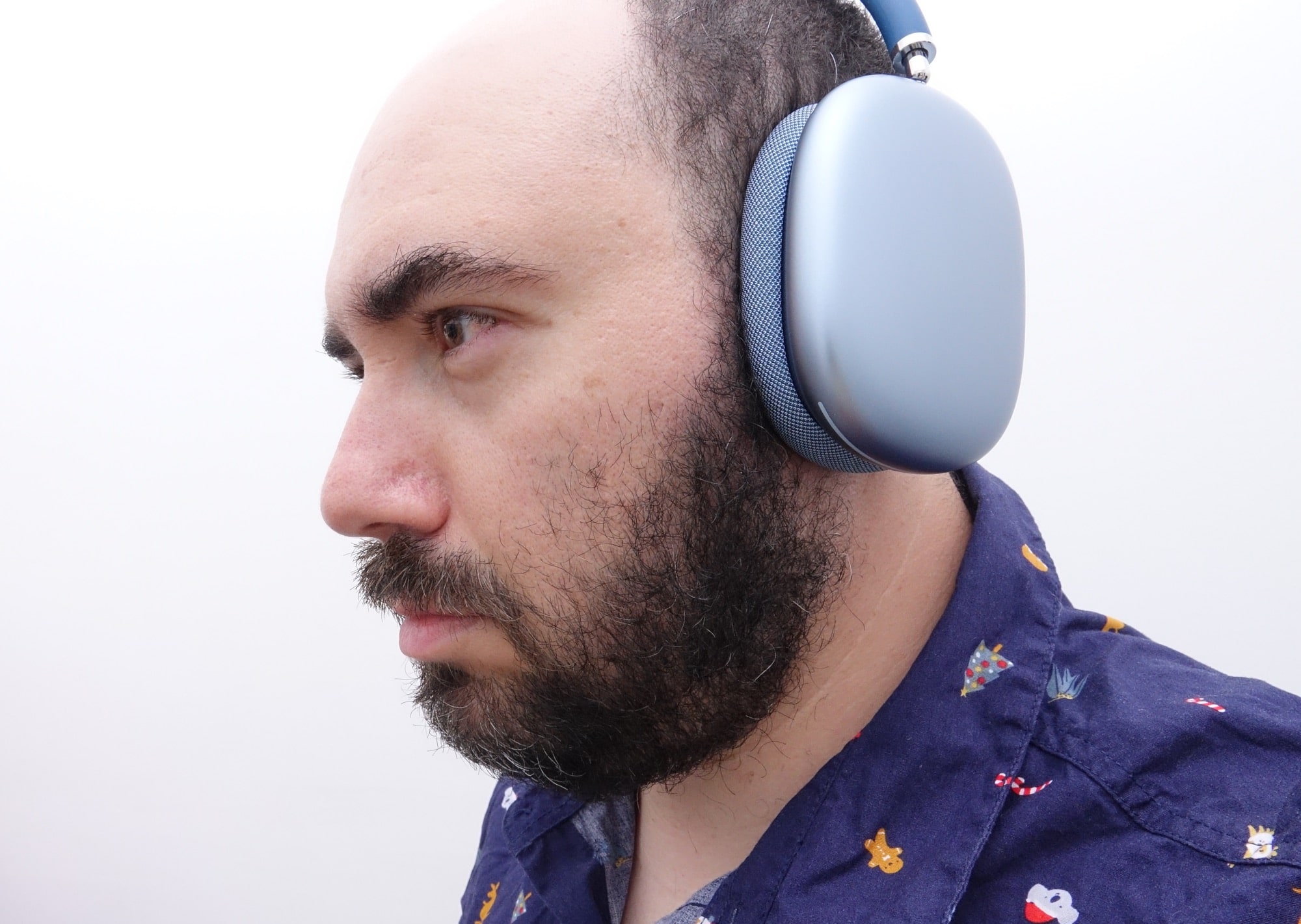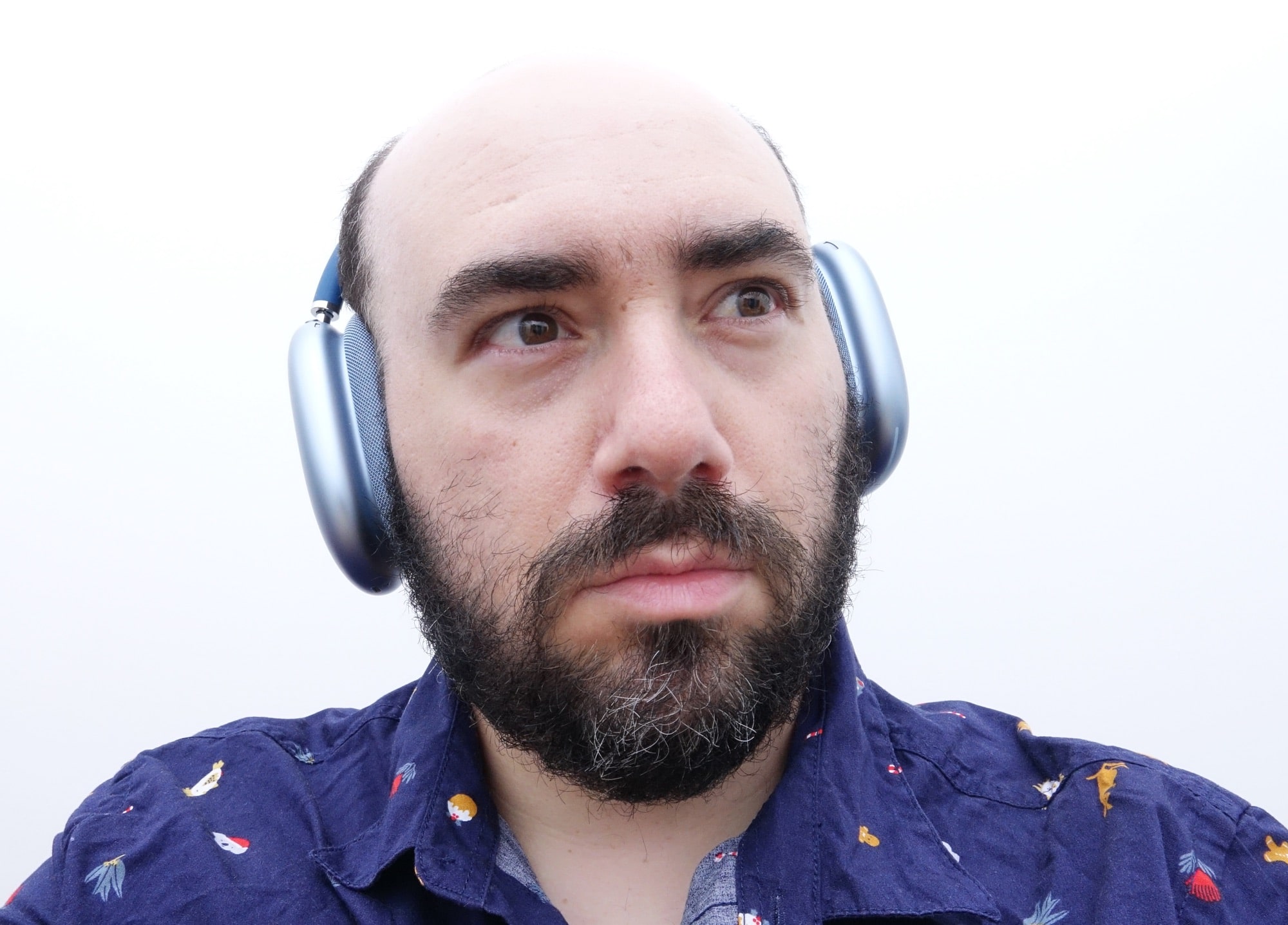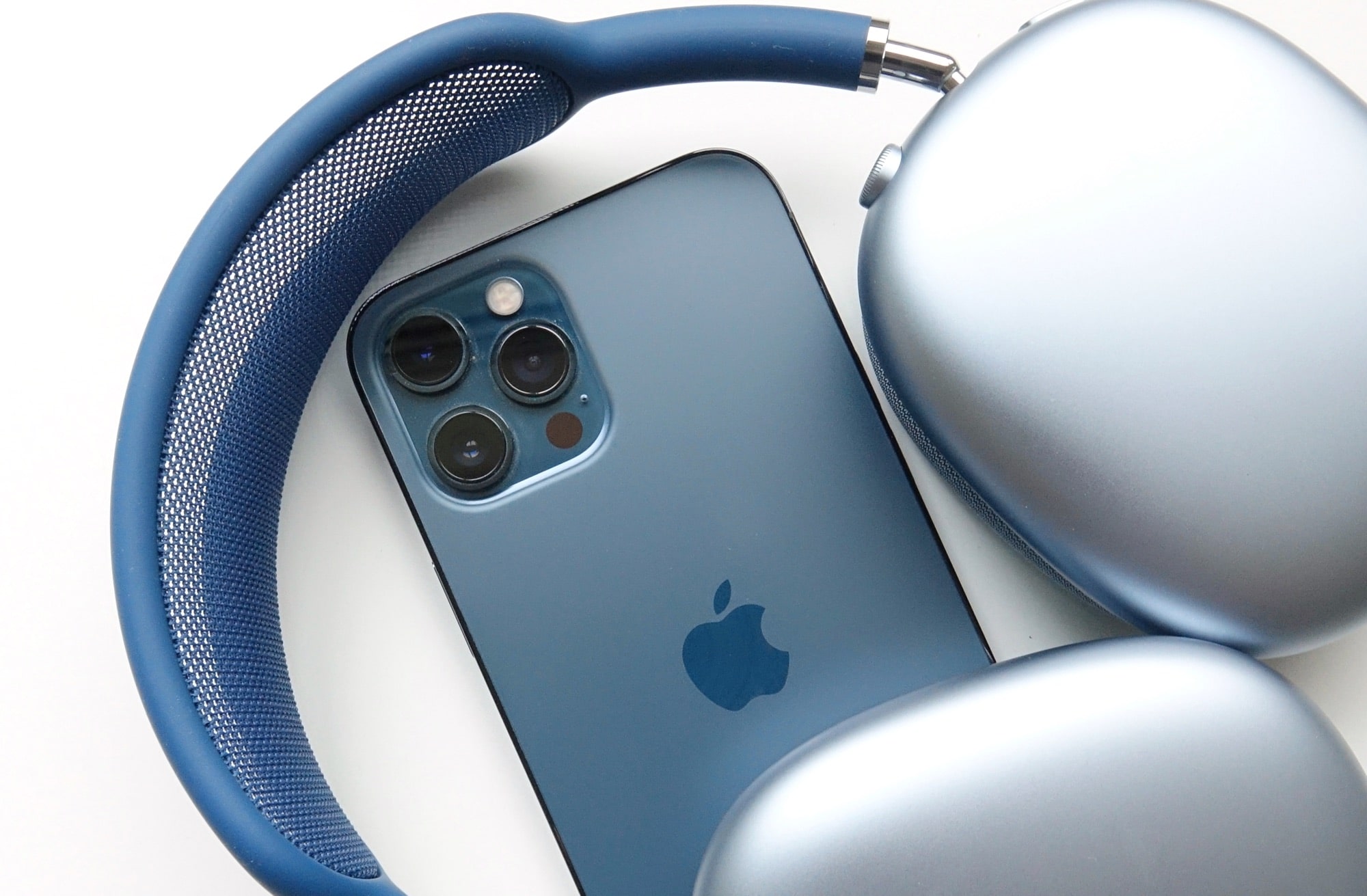Quick review
The good
The not-so-good
Apple has officially entered the big headphone space, and the AirPods Max aren’t just big on price, but big on sound and design, too.
The noise cancelling headphone space can feel crowded, and that’s because it is. Nearly every earphone and headphone brand has something that qualifies as a noise cancelling pair of headphones, and Apple is no different.
Both Apple and its Beats by Dre headphone brand offer an assortment of noise cancelling headphones, whether you look at the in-ear AirPods Pro by Apple, the on-ear Beats Solo Pro, or the over-ear Beats Studio 3 Wireless. Apple has choices in this category, but it’s not done.
Rumoured for the back half of the year, Apple recently launched one more thing, announcing a pair of over-ear headphones, something new for the maker of the iPhone, the iPad, the MacBook Pro, and the Apple TV. That one more thing is a pair of headphones that sit around the air, adopting a circumaural design many refer to as “over-ear”, and endowing it with some pretty spiffy technology, and a price tag to match. Called the Apple AirPods Max, they’re a big headphone both like and unlike Apple’s other styles of earphone.
In a space as crowded as noise cancellation, and where there are some pretty obvious standouts, can the AirPods Max deliver a knockout punch? And are they good enough to steal the benchmark from Sony?
Design and features
Apple’s first over-ear headphones, the AirPods Max are very different from Apple’s other earphones. There are two of those right now, the AirPods and AirPods Pro, both of which are small white in-earphones, the former of which is more of an earbud that hangs there, while the Pro uses earphone tips to hold in place. They’re easily the better of the two, and not just for the tips.
The AirPods Pro also feature noise cancellation and the H1 chip, delivering solid sound that is constantly analysed and equalised based on what the system sees on the wave level.
They’re easily one of the better noise cancelling earphones you can find to date, providing stiff competition for Sony’s WF-1000XM3, and are as good a starting point as any for the Apple AirPods Max.
Built on the same idea, the AirPods Max are a bigger take, delivering much the same approach paired with a 40mm driver and a special twin neodymium magnet-based motor — two magnets, basically — to minimise distortion on each side, plus a combination of nine microphones and several sensors.
Each cup includes an optical sensor, a position sensor, a case-detect sensor (possibly Near-Field Communication), an accelerometer, and a gyroscope, with all of this doing something different.
The optical sensor is likely to pick up on your ears in the headphones to switch them on, as might be the position sensor, while the case-detect sensor tells the headphones when to go to sleep. The movement and space sensors for the accelerometer and gyroscope very likely give the AirPods Max the chutzpah to work in spatial audio, something that came to the AirPods Pro earlier this year in iOS 14, and work here in the AirPods Max, too.
Each headphone can also uses the Apple H1 headphone chip to analyse both the audio and noise around you, equalising both so they sound great, encasing all of this technology in aluminium cups, complete with memory foam covered in mesh textile fabric not unlike what’s on the HomePod and HomePod Mini. You can even see the “L” and “R” inside each, with the patterns citing the slight difference. That mesh fabric appears in the neck band, as well.
Weighing around 384 grams, it’s a slightly hefty combination that delivers a very premium look, as well as a feel the likes of which few headphones achieve. Inside, there’s a battery capable of hitting up to 20 hours of life, and which charges over the Lightning port at the bottom of the headphones.
The AirPods Max connect to devices using Bluetooth, but there is a cable that can make the headphones work with a 3.5mm jack, though it’s not included in the box.
In-use
A little different from the AirPods Pro they’re based on, using the AirPods Max is less about touch controls, and more about physical tactile ones. Specifically, you have two controls on the right can, and while they take a few minutes to work out, they’re easy once you get down to it.
In fact, if you own one of the Apple Watch models, they’re modelled off of that, as Apple repeats some of its popular design elements. Specifically, there’s a flat button and a Digital Crown.
Using the AirPods Max, you’ll find the flat button switches between noise cancellation and transparency mode, while the Digital Crown offers a few things. Press it once to pause and play tracks, and to accept phone calls, and if you press it twice or three times, you’ll skip a track and go back a track, respectively. Those are pretty consistent controls with standard Bluetooth headphones, but it’s just been shifted to one button, which is easy enough to memorise.
The best form of the usability comes from the Digital Crown’s dialing, which allows you to dial in the volume up or down when you turn the control. Think of this is as beautifully analogue way to control your headphone sound, and very reminiscent of an old school volume knob, something that you don’t see very often these days at all. It’s delightfully tactile, and one of our favourite features of the AirPods Max, for sure.
Performance
Of course, our favourite feature would have to be the sound to get us to recommend these headphones, and so of course, it’s time to review what’s on offer in the AirPods Max.
Like we do with all our headphone and speaker review, we’re putting Apple’s latest headphones through their paces using the Pickr Sound Test, which you can listen to for yourself using Apple Music, Spotify, YouTube Music, and even Tidal.
And that starts with electronic, delivering an impressive balance across lows, mids, and highs in Tycho and Daft Punk, with a delightful bass drop in Tycho’s starter song “Glider”, which is kicks off the bass capabilities of these cans quite nicely. There’s no distortion or fuzz, and the headphones just feel appropriately balance here.
Pop and R&B delivers much of the same, with a joyful stereo separation that’s spacious and superb in Ariana Grande’s “Into You”, and will help make you feel as if that audio is flowing around your head, even if it’s not 360 degrees like an Atmos sound. Mark Ronson’s “Uptown Funk” does that and more, with a large thump in the low end, and marks this track as one of the best so far to test the AirPods Max with. In fact, that’s much for much with the category, with delightful clarity in Marvin Gaye’s “Ain’t No Mountain”, plus some beautiful bass and mids in Charlie Puth’s “Done For Me”.
The appearance of balance is hard to ignore in these headphones, but it goes deeper than that, with the AirPods Max able to highlight parts of the song you mightn’t have heard before.
In Muse’s “Madness”, there’s a bit of synth in the background of the verses we’d never picked up on, something the AirPods Max was able to shine a light on. It didn’t bring it entirely to the surface, but rather lifted it slightly, allowing us to hear it in the background. The same was true with the cymbals in Rage Against the Machine’s “Take the Power Back”, which were noticeable, but typically weren’t discernible by themselves with most headphones. And all throughout, snappy bass, solid mids, and lovely and clear highs.
The bass was one area that has to be heard to be believed, and forced us to jump over to our second playlist, the Pickr Bass test, which offered a delightfully large space for Charles Mingus’ “Moanin'” to play along in, and which delivered much the same for Justin Timberlake’s “Lovestoned”.
Poppier tracks from Charlie Puth and Five Seconds of Summer delivered more of that big bass, but didn’t drive too hard, with the vocals soft yet sturdy, and a lovely rendition all throughout.
Testing it with both Apple Music and the Tidal HiFi Masters, tracks played through the headphones really stand out, and in particular sections, too.
Of particular note was the meaty punchy bass from Billie Eilish in “Bad Guy”, which was deep and driven, but lacking in any distortion. That may well be the magnetic elements in each side of Apple’s AirPods Max playing here, which prevent the magnets from distorting as they play, holding them steady and making it possible to push what is clearly some of the best bass this reviewer has ever heard in headphones.
Simply, the AirPods Max offer a deep bass that’s crazy big. We’re not even sure it should be possible. It won’t be apparent in every song, but those that deliver it will drop the bass in such a way few headphones can achieve. Hell, some speakers would struggle to make bass sound this good.
There’s also the matter of the volume, because these are loud, but in a good way. They’re actually reminiscent of audiophile-grade headphones, which go loud when driven with an amp, but aren’t always loud enough to knock you off your seat, but rather highlight the details more clearly. Apple’s AirPods Max can knock you from your perch with their volume, and they do get loud, but the point is you can drive them to be quite loud specifically to hear the volume, and that matters muchly.
It’s worth noting that the AirPods Max don’t offer the same style of sound as the current benchmark, the Sony WH-1000XM4, but are strong players all the same. While Sony’s headphones offer warmth, Apple’s AirPods Max are more about balanced renditions, delivering a clear sound that’s hard to ignore. It’s lovely, for sure, but not the same.
Battery
Alongside that impressive performance is a perfectly capable battery, able to hit 20 hours of battery life if you let it, but that will also go to sleep when not in use with the smart case it comes with.
We’ve not had the time to get through the entire 20 hours Apple says it can hit, but testing it through 5 to 6 hours of straight wearing and using the headphones, we found we had consumed near a third of the battery life, suggesting the 20 hours could be achievable.
Perhaps bizarrely, there’s no power button on the AirPods Max to turn them off, likely part of Apple’s approach to keeping design simple. You probably don’t need the power button, and will likely rely on the AirPods Max working out when you’re wearing them, thanks to on-ear detection. With that, there’s really no need for a power button, and they’ll go to standby when you take them off your ears, or a deep sleep with the smart case.
Case
The smart case is included in the box, one of the few things that is, but it’s not much of a case. More or less just light protection, you’ve probably seen the jokes about how it looks a little like a bra, and it’s true, it kind of does.
However this case is much easier to use than you might expect, simply pushing the cans into the folding magnetic case, which when they’re holding the headphones, also manages to put them to sleep to preserve the battery.
It’s not much of a case, mind you, and we wouldn’t rely on it to protect the AirPods Max through anything particularly rigourous. Rather, it’s just a way to help you keep the headphone battery in tip top shape, and to prevent excess dust from building on your headphones.
Value
The biggest issue with the Apple AirPods Max isn’t how flimsy the case is as far as protection goes. Rather, it’s about that price tag, because for many, it’s all they’ll see.
In Australia, the AirPods Max are $899, tipping the scales as one of the most expensive pairs of noise cancelling headphones, and approaching the audiophile category of the market. Headphones in that space often go far over $1K mark, so Apple’s price isn’t exactly as premium as you might expect, and is easily beaten by some of the hefty prices for big cans from the likes of Audeze and Astell & Kern, to name a few.
However when you compare it to other noise cancelling headphones, it’s pretty easy to see the frustration. While most headphone brands sit closer to $600 for noise cancelling cans, Apple’s are way over that.
Are they worth the extra price? On that we’re not entirely sure.
The sound is very good, and while it’s not warm like Sony’s option, it gives Bose’s definition of balance in both the Bose 700 Noise Cancelling Headphones and the Bose QC 35 a good run for its money, practically usurping Bose’s headphones as the new definition of balance overall.
We could definitely see these headphones at the $700 or $750 mark, so the $899 price isn’t entirely out of kilter, even if it is horrifically expensive. You’re not just paying for the sound, but also the design and materials, and Apple is known for being properly premium, of which these headphones most definitely fit that bill.
What needs work on the AirPods Max?
The price sure is hard to swallow, though, and it’s one of the first things we’d work on. At $799, the AirPods Max would make more sense, or if Apple had bundled in a 3.5mm headphone cable, which itself is missing in action. Heaven forbid you want to plug your headphones into a media player or something with a headset jack, because you’ll need to spend around $50 in Australia on the cable. Yikes.
We’d also love a proper case in the box. Something that does marginally more than lightly protect the exterior, which is all this case does. It’s small and does the job to prevent the occasional scuff, which these metal headphones might get, but it’s nowhere near as protective as the options other headphone makers offer up.
All of this adds up to what feels like a lack of perceived value, because $899 is a lot of money, and while there’s some really quite impressive sound and technology here, that price tag feels so hefty that it’s hard to ignore, much like the weight, which is also fairly sizeable.
Final thoughts (TLDR)
When all’s said and done, Apple’s late launch of a pair of premium headphones definitely is something, and one of those things that has to be heard to be believed.
The sound on offer is very impressive and very capable, the likes of which may just keep you listening via the AirPods Max and never thought back to anything else. They’re big and special, and rather lovely, too.
Sorry Bose, the AirPods Max are the new definition of balance.
We’re not sure if the price justifies everything being delivered, because $900 is sure a lot of money. The AirPods Max are perfectly premium, and fit alongside everything Apple is known to deliver in its headphones. But when the current noise cancelling benchmark is closer to a third the price (a little bit more), it’s understandable why Apple’s alternative is a notably big ask.
However anyone opting to go the route of the AirPods Max will find a headphone that is delightfully driven and wonderfully clear. They’re a gem, even if they’ll make your wallet feel as if you’ve purchased an expensive gem at that. Easy to recommend, even if they’re a pricey pair.
